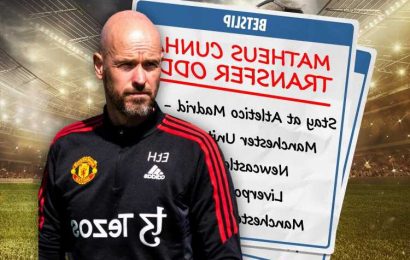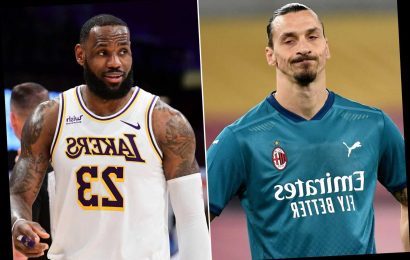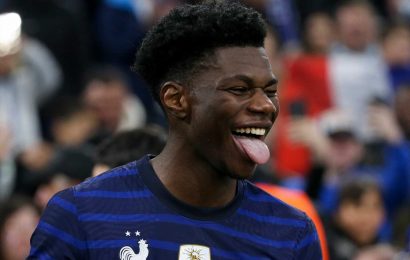Greg Noll, a fearless surfer and a superstar in his sport who in the 1960s tackled stunningly big waves in Hawaii, died on Monday in Crescent City, Calif., about 20 miles south of Oregon. He was 84.
His son Jed confirmed the death.
Noll, who was nicknamed Da Bull and who also owned a surfboard-making business, had been surfing since the late 1940s, seeking something close to the perfect ride on the biggest waves in Southern California, Hawaii, Mexico and Australia.
He was difficult to miss on the beach or in the water: He had a bodybuilder’s physique, wore black-and-white prison-stripe trunks (so he would be noticed by filmmakers) and took a very wide, aggressive stance on his board, as if poised to pounce on prey.
“In look and style, he could be the Babe Ruth of surfing,” Jim Kempton, president of the California Surf Museum, said by phone.
In the fall of 1957, Noll and several other surfers tempted fate at Waimea Bay, on the north shore of Oahu, where a teenager had died 14 years earlier. Local residents insisted that no one had surfed there since.
Noll did not lack for fear — he later described “ghouls whizzing around the place” — but at 20 he was adventurous, and he had been hoping to conquer the shark-friendly waters of Waimea Bay for a while. So he paddled out and caught a wave believed to have been as much as 30 feet high.
“I took off on a wave, went down the side, popped out the other end and went, ‘I’m alive. Nothing happened,’” Noll said in the 2004 surfing documentary “Riding Giants.”
On Dec. 4, 1969, a day when even Waimea seemed too perilous to attempt, he drove west to Makaha, where the pounding surf turned out to be at least as dangerous. He estimated his chances of survival at 50-50, but he said he wouldn’t have forgiven himself if he hadn’t tried. After attempting the storm-roiled waters with a few other surfers, he tried on his own.
An eyewitness said in “Riding Giants” that Noll paddled out against a backdrop of a “huge, massive, black wall” of water. “He stands up and he’s this little speck on this gigantic wall and you’re saying, ‘Oh, my God, he looks like this tiny cartoon figure.’ He gets into his stance — ‘Grrr, I’m going!’ — and he drops down, drops down, drops down and he gets to the bottom of the wave and it’s starting to come over the top of him and he kind of steps off the rail. There was nowhere to go. That was it.”
He had wiped out at the bottom of a wave that he said was 10 feet higher than any he had ever surfed.
“I was under the wave and all I could see was a tiny patch of sunlight,” he told The Honolulu Star-Advertiser afterward, and he had to swim a mile against swift currents to return to shore.
Fred Hemmings, another big-wave surfer who was there that day, told the newspaper, “If it had been anyone else in that situation, he would have died.”
At that point, Jed Noll said in a telephone interview, he “stopped his pursuit of riding the biggest wave ever every winter. But he didn’t stop surfing.”
Several days after, when Noll was back at Waimea Bay, he saved a Navy seaman from drowning. “If he hadn’t brought him in, the guy would have drowned,” a friend, Henry Prece, told The Star-Advertiser.
“He had a number of rescues over the years,” his son said.
Greg Lawhead was born on Feb. 11, 1937, in San Diego and moved about 120 miles north to Manhattan Beach, Calif., when he was about 3 after his mother, Grace Zalabak, a homemaker, divorced his father, Robert. When she married Ash Noll, a chemical engineer, Greg took his stepfather’s surname.
Living near the Manhattan Beach pier, Greg came in close contact with the ocean; as a youngster, he began to fish, hand out live bait to fishermen and watch surfers riding the waves. As a teenager, he learned to make surfboards in a local shop, then began to create his own, first in his parents’ backyard and then in various small facilities.
And he was surfing.
“In my day, people thought we were from another planet or something because we surfed,” he said in a podcast interview on the website The Temple of Surf in 2020, “and that we were some kind of diseases that need to be eradicated.”
In 1956, he was part of a United States lifeguard team that competed in a multinational surf lifesaving demonstration in Australia at the time of the Summer Olympics in Melbourne. The surfboards that the team used stunned the Australians with their maneuverability.
“Took ’em from the horse and buggy straight to the Porsche,” Noll was quoted as saying in “The History of Surfing” (2010), by Matt Warshaw.
In the era before professional surfing took hold, Noll was able to earn a living making boards — he opened a factory in Hermosa Beach in 1965 that was very successful — while pursuing the biggest waves.
He also appeared in surfing documentaries like “Walk on the Wetside” (1965) and “Surfari” (1967), on which he was also a credited photographer. He was a surfing double for the actor James Mitchum for “Ride the Wild Surf” (1964), a feature film shot in Hawaii with a cast that also included Fabian and Shelley Fabares.
Noll loathed the movie’s lack of realism, which he said made him vomit.
He disliked what the genre of frothy beach movies did to surfing — jamming California beaches with untrained surfers — and he closed his surfboard factory in 1973. He was a commercial fisherman in Crescent City for the next 15 years.
But in the late 1980s, he returned to making surfboards. Instead of churning them out in a factory, he crafted custom-made and limited-edition boards. And in 2009, he began working with his son Jed at a start-up company, Noll Surfboards, in San Clemente, creating boards that celebrate major events in surfing history and renowned surfers.
In addition to his son Jed, Mr. Noll is survived by his wife, Laura (Archuletta) Noll; a daughter, Ashlyne Walton; two other sons, Tate and Rhyn; nine grandchildren; and a great-granddaughter.
Noll was one of several notable surfers who told their stories in “Riding Giants,” including Laird Hamilton and Jeff Clark. Stacy Peralta, the film’s director, said that the gregarious, candid and funny Noll was one of his inspirations to make the film.
“He can actually — quite exceptionally — articulate the experience,” Mr. Peralta told Documentary magazine in 2004. “He eroticized Waimea Bay. He talked about it as if it were a woman.”
Source: Read Full Article








